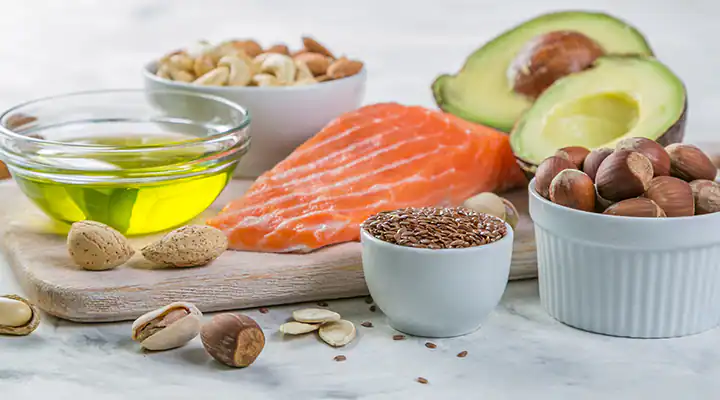Say Goodbye to Dry Eyes: Understand and Overcome Dry Eye Syndrome Today
- Margaret Grady

- Nov 14, 2023
- 3 min read

With the dry and windy weather of Autumn and the cold Winter ahead, added to our hours on the computer, we may experience dry, burning, and itchy eyes, known as Dry Eye Syndrome. (DES). This is the number one complaint that eye doctors hear from patients.
Some nutrients and formulations are especially helpful in the holistic treatment of DES.
Why Dry Eyes Develop
Dry eye syndrome develops either because fewer tears are produced (aqueous-deficient DES) or tears evaporate too quickly (hyper-evaporative DES).
The moisture-laden surface of the eye contains three interrelated layers known as the
TEAR FILM. If their balance is lost, the tear film deteriorates, and we experience dry eye.
The innermost layer is a mucous layer of electrolytes, proteins, and water.
Outside that is a thicker, waterier aqueous layer that is mildly alkaline.
The outer protecting lipid layer is made of oily meibum that keeps the tear film from evaporating.
Eye surgery often damages the goblet cells floating in the conjunctiva which supply mucin to create the thin mucous layer.
Lacrimal glands, which can become blocked, supply the pH 7.4 watery fluid which is pumped across the surface of the eye by blinking. They are linked to nerves (making you tear up when smoke gets in your eyes) and are also linked to the lymphatic system (helping remove debris).
Meibomian glands (which produce the outer lipid layer) can become blocked and dysfunctional, resulting in too rapid evaporation of the tear film.
Causes of Dry Eye
Anything that reduces the tear film, or its even and regular distribution causes dry eye syndrome.
Most DES is caused by Meibomian gland dysfunction (MGD) which results in reduction in the oily outer film. Overnight application of Castor Oil Eye drops will provide relief from this.
Computer users blink less; their blink rate decreases by about 40%. Blinking acts as a pump to keep the tear film spread evenly over the eye. The tear film begins to naturally degrade after about 10 seconds, so we automatically blink about 10-12 times a minute. But when focused intently on something (like a computer), our blink rate slows, and our eyes get dry and tired. Computer users have low concentrations of mucin 5AC, which is an essential component of the mucous layer. Take regular breaks and remember to blink often.
Dry eye syndrome is inflammatory in nature. The “vicious cycle of inflammation” is a major contributor to dry eye syndrome. Age-related inflammation attacks all layers of the tear film: mucous, watery, and lipid layers.
Dry eyes in women appear to be related to fluctuations in hormone levels, particularly oestrogen and androgens.
Environmental and lifestyle factors like pollutants in the air, smoking, and certain medications increase the likelihood of DES.
Essential Nutrients to Prevent Dry Eye
We believe that the best way to target dry eye syndrome is to support the integrity of the tear film components, as well as reduce eye and whole-body inflammation by implementing a diet high in essential nutrients and/or supplementation. Fuel up on a variety of organic fruits and vegetables, especially the colourful ones like carrot and bell peppers. Eat raw as much as possible. Smoothies are a great way to consume things like kale and beetroot.
Vitamins and minerals are essential substances that our bodies need to function normally. The known vitamins are vitamins A, C, D, E, and K and the B vitamins: thiamine (B1), riboflavin (B2), niacin (B3), pantothenic acid (B5), pyridoxine (B6), cobalamin (B12), biotin, and folate/folic acid. Several minerals are essential for health, including calcium, phosphorus, potassium, sodium, chloride, magnesium, iron, zinc, iodine, sulfur, cobalt, copper, fluoride, manganese, and selenium.
People who don’t get enough vitamins and minerals from food alone, including people who are on low-calorie diets or who avoid certain foods (such as strict vegetarians or vegans), may want to consider supplementing with natural herb extracts that incorporate the full spectrum of essential vitamins and minerals, like Irish Sea Moss, Bladder wrack and Burdock Root, together with Moringa Leaf extract.
Omega-fatty acids, which are plentiful in oily fish like salmon and mackerel, may help reduce inflammation throughout the body. Other natural food sources high in Omegas 3 and 7 include Avocados, Macadamia Nuts and Olive Oil.
Vitamin D supplementation improves dry eye symptoms, quality of tear film, and the ocular surface. Vitamin D deficiency is linked to tears without enough watery content and tear film deterioration. Since older people tend towards low vitamin D levels for several reasons, supplementing with vitamin D3 is a good idea.
Topical application of pharmaceutical grade Castor Oil Eye Drops will support the integrity of the lipid layer component of the eye, keeping the tear film from evaporating.
Daily exercise and fresh air also contribute to increased flow and oxygenation of the blood, which in turn supports our mind, body, and soul in supporting our overall health & well-being.




Comments